Hi there, I'm interested to know how others have categorised/grouped their processes. We have done this by department so we have 7 Units which each have a variety of processes mapped. (sometimes 500+ ) This also means we have duplicates in different groups. Looking to see how others have done this. Thanks
Hi @stapleer,
In terms of process classification, most organisations choose to either classify them by departments/functional areas within their business, or via a process classification framework, like APQC. In terms of having processes "duplicated" you should be able to associate a process to more than one group, thus limiting the effort required to maintain processes going forward and keeping them consistent across your organisation.
An example of the generic APQC process classification framework is available in our solution gallery for you to download and import in your environment if you would like to see how the framework is structured, and is located below:
https://gallery.nintex.com/t/apqc-cross-industry-process-classification-framework
With regards to linking processes to multiple groups, this can be done in the secondary location by creating a link to the process group or process in question, as can be seen below.
In the secondary location you would like the process linked, whilst in the Group Overview Edit page, select the "Add link" dropdown, and select either the Process Group or Process option:
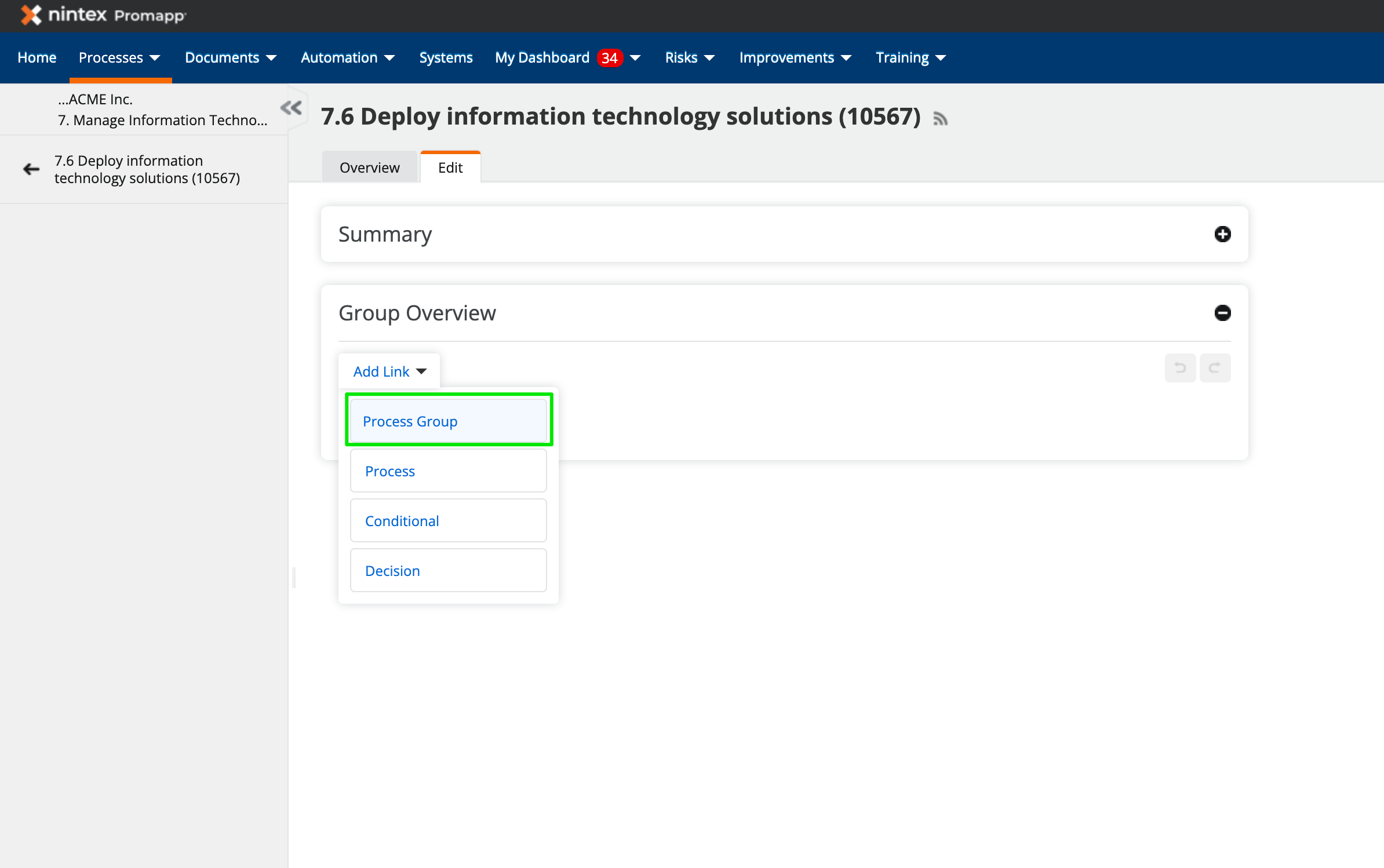
Navigate to the existing Process Group or Process in question, and select it from the list:
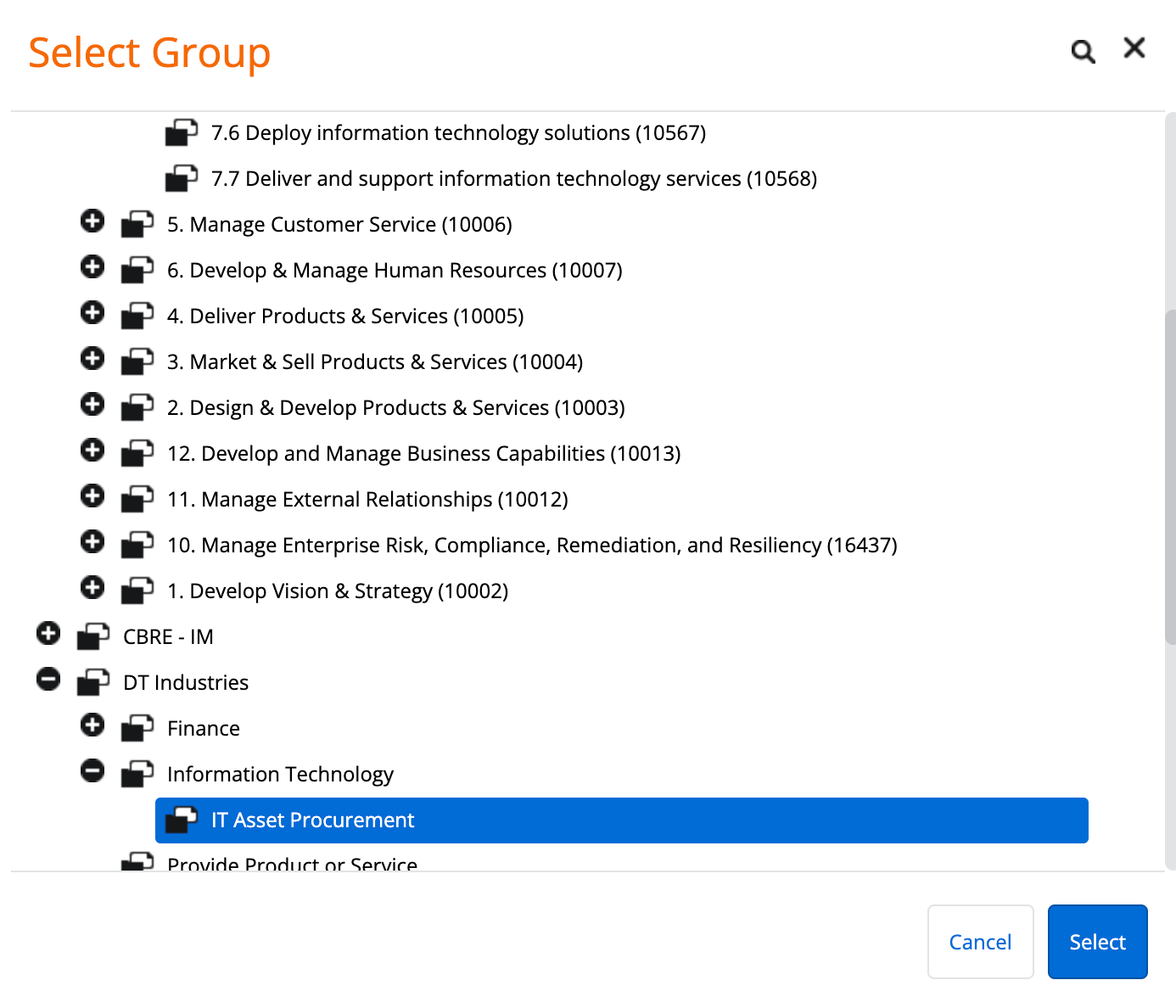
Assign a role and save the changes:
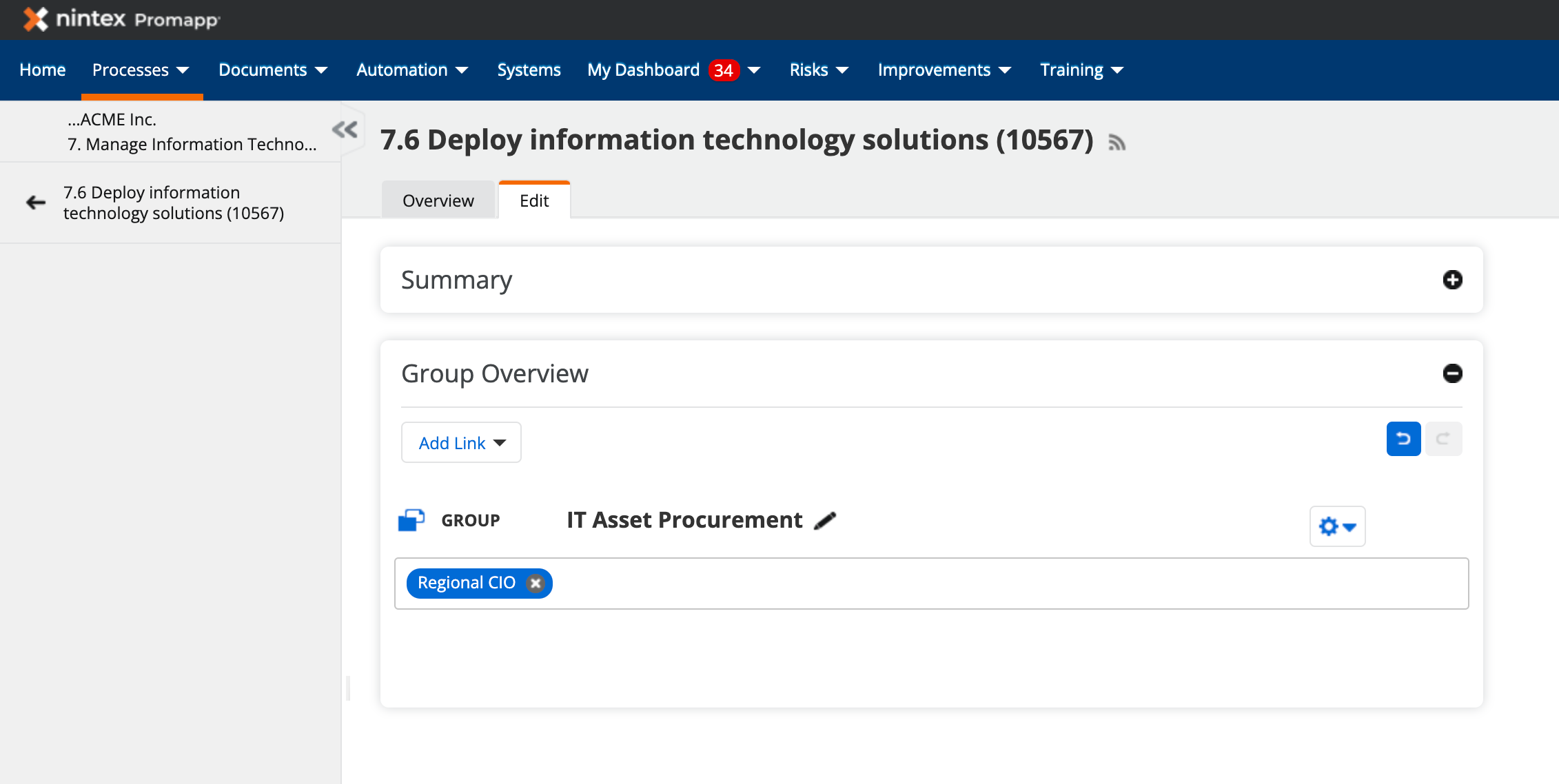
Now your linked process should appear in the Group Overview:
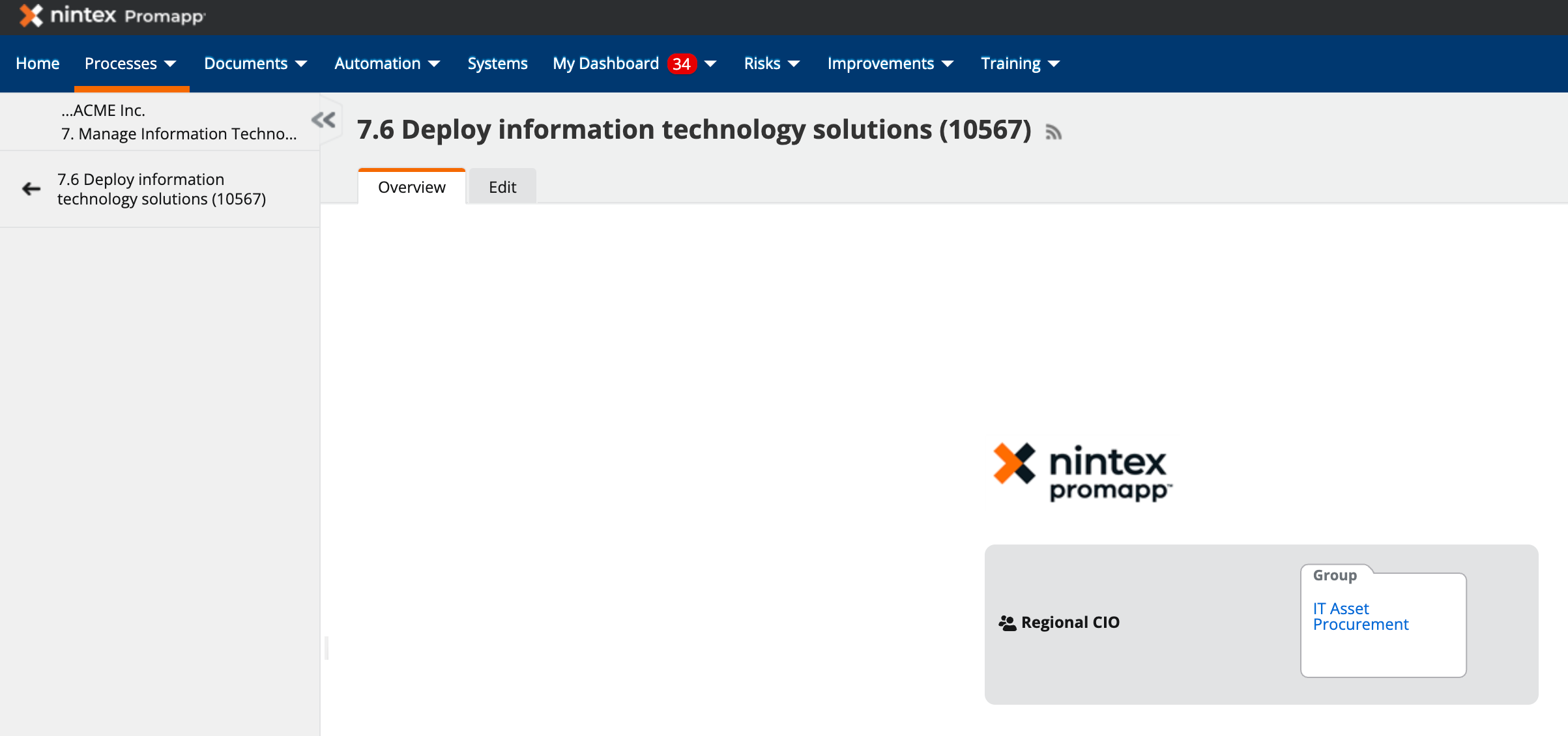
One caveat worth mentioning is that navigation may become tricky at times, as selecting the link to the process will "redirect" you to where the process is stored primarily, but it does give you the flexibility to use both classification methods and reduces the amount of rework that needs to be done to keep processes up to date and in sync.
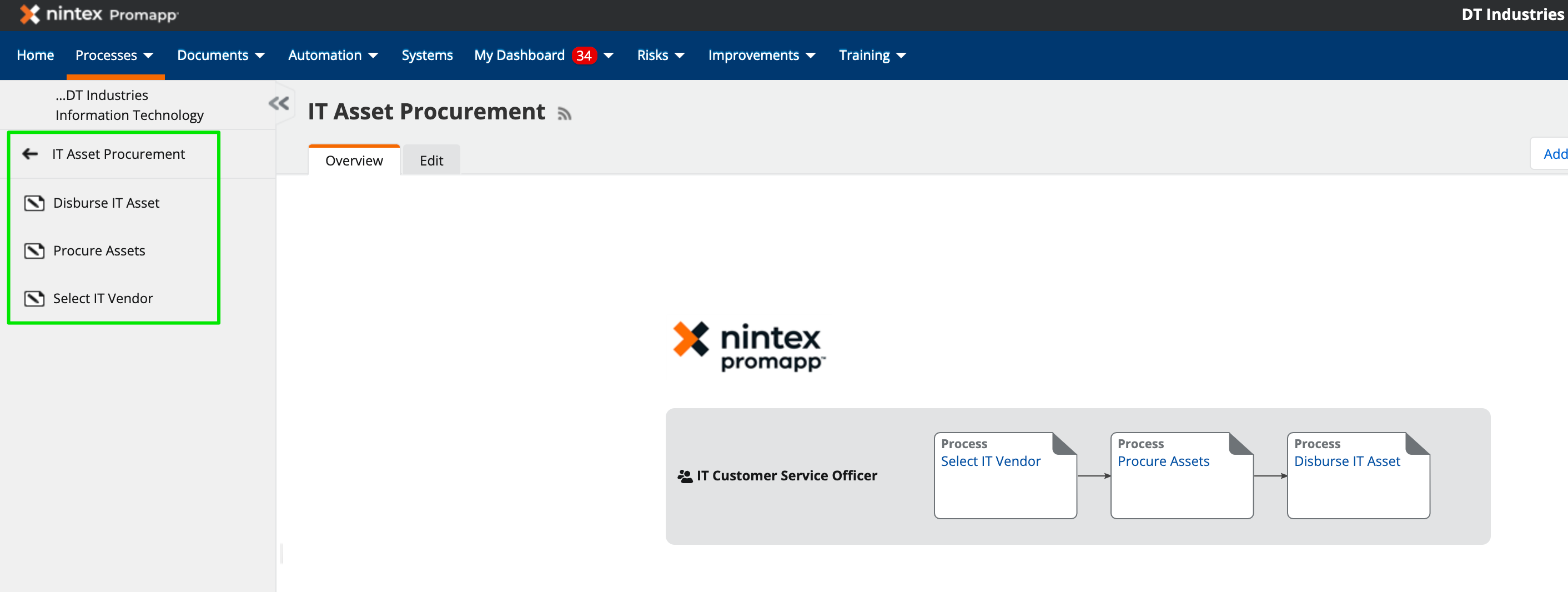
Hope this helps?
Kind Regards,
Mark.
We are a large government department.
Our process group structure follows our organistational chart, sometimes down to team level (and in some cases after team there are service-related subgroups. Our process group structure is in some places about 6 layers deep. We currently have over 2,000 processes in Promapp.
My cautionary tale in using this process group structure relates to re-structures/re-organisation of business units. When this happens there can be a lot of manual administration required to create new process groups, move processes to their new process group (finding a staff member who can actually provide you with this information can be the trickiest part!), change document group association to their new group so that old groups can be deleted ... In my experience large restructures/reorganisations are quite a headache.
To my mind this would be avoided if process groups are process/service-related (i.e. as per a process framework like APQC) rather than business unit/organisational chart related, as it would be swimlanes/roles that would likely need updating rather than the group structure in Promapp. Creating new roles and merging old ones into them (so that process maps are updated with the new role) seems much simpler than having to change the group structure and move things around. Bulk new roles can be auto created via uploading a csv file; merging is still a manual process though (noting I usually have to do this in addition to all the other administration actions as well, because our roles have a prefix of business unit abbreviation).
We don't allow duplicate processes (as Promaster I check for duplicates monthly). As mentioned above, we recommend adding a shortcut to other process groups where required (via the Edit/Summary tab > Add process shortcuts in the following groups). Note a shortcut process is not editable other than by the original process owner/expert.
Hi! We use the functional model and are beginning to explore use of the "additional linked groups" to allow users to also have their own space for collected maps. Anyone who creates maps must first determine where in the process landscape their map would live. Onboarding for any department would live in the Human Resources-->Onboarding folder, for example. Their department/area is noted in the title of the map created.
Reply
Enter your username or e-mail address. We'll send you an e-mail with instructions to reset your password.



